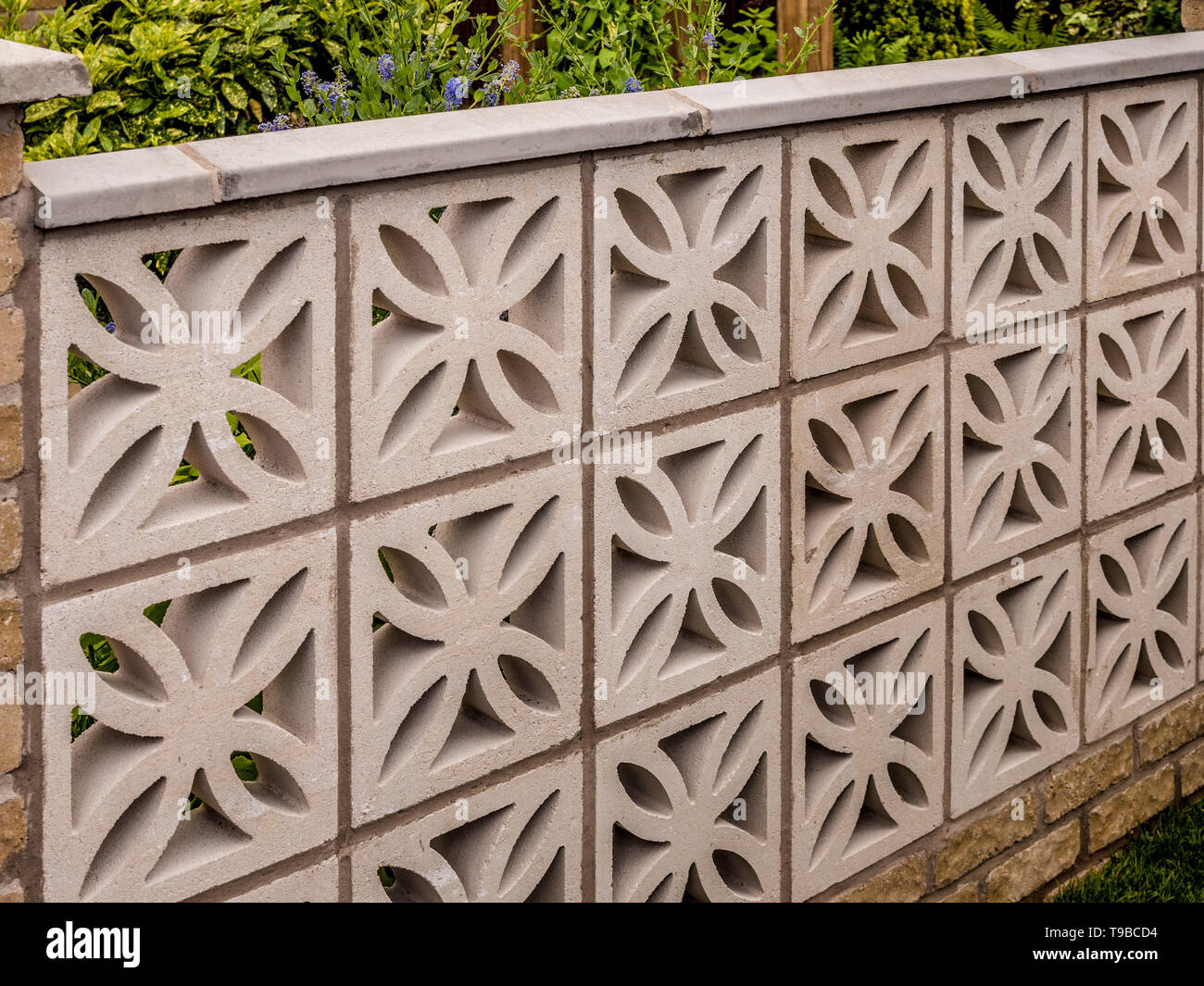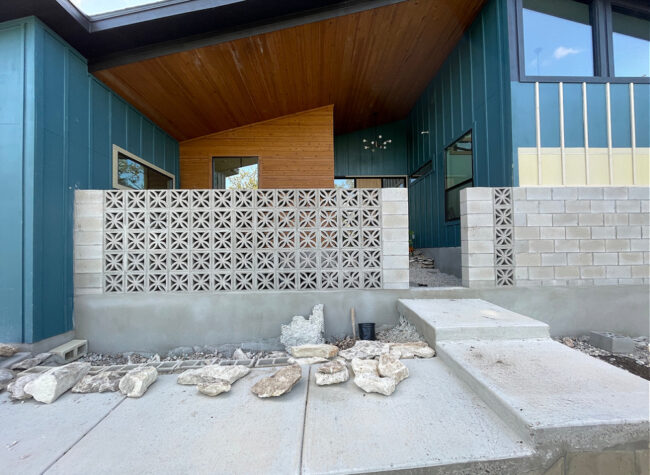When it comes to enhancing the aesthetic appeal of your home or commercial space, decorative concrete blocks for walls stand out as an excellent choice. With their unique textures, colors, and designs, these blocks can transform any ordinary wall into a statement piece. In this guide, I will share my personal experiences, insights, and a wealth of information about decorative concrete blocks, including their benefits, types, installation process, maintenance, and answers to frequently asked questions.
Understanding Decorative Concrete Blocks
Decorative concrete blocks are specifically designed to provide both functionality and aesthetic appeal. They can be used in various applications, from garden walls and patios to indoor features and architectural designs. These blocks are made of cement, aggregates, and color additives, making them durable yet versatile.
Types of Decorative Concrete Blocks
There are several types of decorative concrete blocks, each serving different purposes and aesthetics. Here’s a detailed breakdown:

| Type | Key Features | Best Uses |
|---|---|---|
| Textured Blocks | Various patterns and finishes | Exterior walls, garden features |
| Colored Blocks | Available in many colors | Decorative walls, landscaping |
| Architectural Blocks | Custom designs and shapes | Commercial buildings, feature walls |
| Hollow Blocks | Lightweight, insulation properties | Structural walls, partitions |
Benefits of Using Decorative Concrete Blocks

Choosing decorative concrete blocks offers numerous advantages. Let’s delve into some key benefits:
- Aesthetic Appeal: The wide range of designs and finishes available allows you to create visually striking walls.
- Durability: Concrete blocks are resistant to weather, fire, and pests, ensuring long-lasting functionality.
- Low Maintenance: These blocks require minimal upkeep—just occasional cleaning to retain their beauty.
- Energy Efficiency: Insulated blocks can help regulate indoor temperatures, reducing energy costs.
- Customizable: You can choose colors, textures, and sizes to suit your specific design needs.

Installation of Decorative Concrete Blocks
Installing decorative concrete blocks may seem daunting, but with the right approach, it can be a rewarding DIY project. Here’s a step-by-step guide based on my experience:

Preparation: What You Need
Before starting, gather all necessary tools and materials:

- Concrete blocks
- Mortar mix
- Level
- Rubber mallet
- Trowel
- Saw (if cutting blocks is needed)
- Protective gear (gloves, goggles)
Step-by-Step Installation Process

Step 1: Plan Your Layout
Determine the area where you will install the blocks and create a layout plan. This will help visualize the design and ensure accurate measurements.
Step 2: Prepare the Base
Clear the area of any debris and level the ground. If necessary, pour a concrete footing to provide a stable base for the blocks.
Step 3: Mix the Mortar
Follow the instructions on the mortar mix packaging, ensuring you achieve the right consistency for application.
Step 4: Lay the First Row
Using a trowel, apply mortar to the base where you’ll start laying the blocks. Place the first block carefully, checking with a level to ensure it’s even. Continue laying blocks in that row, applying mortar between each block.
Step 5: Stagger the Joints
For added strength and an appealing look, stagger the joints of the second row over the first. Repeat the process of applying mortar and laying blocks.
Step 6: Finish the Wall
Continue building the wall to your desired height. Once complete, use a wet sponge to clean any excess mortar from the surfaces.
Maintenance of Decorative Concrete Walls
While decorative concrete is low maintenance, there are some steps you should take to keep your walls looking their best:
- Regular Cleaning: Use a mild soap and water solution to clean the surface. Avoid harsh chemicals that can damage the finish.
- Inspection: Periodically check for any cracks or damage and perform repairs as needed.
- Sealing: Depending on the type of finish, consider applying a penetrating sealer every few years to protect against stains and weathering.
Cost Considerations
When planning for decorative concrete block walls, understanding the cost is crucial. Here’s a breakdown of factors that influence pricing:
Materials Cost
The price of decorative concrete blocks can vary significantly based on type, finish, and design. On average, expect to pay between $1.50 to $4.50 per block.
Labor Costs
If you hire professionals, labor costs can add an additional $40 to $100 per hour, depending on your location and the complexity of the installation.
Additional Expenses
Don’t forget to budget for tools, mortar, sealants, and potential landscaping adjustments that may be necessary.
Comparing Decorative Concrete Blocks with Other Materials
When considering decorative concrete blocks, it’s essential to compare them against other popular wall materials. Below is a comparison table:
| Material | Durability | Aesthetic Options | Cost | Maintenance |
|---|---|---|---|---|
| Decorative Concrete Blocks | High | Extensive | $1.50 – $4.50/block | Low |
| Brick | High | Moderate | $3.00 – $10.00/block | Moderate |
| Wood | Moderate | High | $2.00 – $6.00/sq. ft. | High |
| Vinyl Siding | Moderate | Limited | $3.00 – $7.00/sq. ft. | Low |
Personal Experiences and Insights
Now, let me take a moment to share a personal experience about using decorative concrete blocks. A couple of years ago, I decided to revamp my garden space, and decorative concrete blocks were my material of choice. Initially, I was concerned about the installation process, as I had little experience with masonry. However, I found the project rewarding, and seeing the transformation unfold was incredibly satisfying.
The blocks added a modern touch with their sleek texture and colors. Friends and family have since complimented the design, and it has become a favorite spot for gatherings. The best part? I have yet to encounter any significant maintenance issues, affirming my choice.
FAQs about Decorative Concrete Blocks
1. What are decorative concrete blocks used for?
Decorative concrete blocks are used for various applications, including garden walls, patios, commercial buildings, and even indoor features to enhance aesthetics.
2. Are decorative concrete blocks energy-efficient?
Yes, especially insulated decorative concrete blocks can significantly enhance energy efficiency by regulating indoor temperatures and reducing heating and cooling costs.
3. How do I choose the right type of decorative concrete block?
Consider your project’s purpose, the desired aesthetic, and local climate conditions. Each type of decorative block has its unique features suitable for different applications.
4. Can I install decorative concrete blocks myself?
Absolutely! With the right tools and a bit of patience, DIY enthusiasts can successfully install decorative concrete blocks following proper guidelines.
5. How do I maintain decorative concrete walls?
Regular cleaning, periodic inspection for damage, and applying a sealer every few years are essential steps in maintaining your decorative concrete walls.
Conclusion
Decorative concrete blocks for walls are an excellent choice for anyone looking to enhance their space’s aesthetic and functional value. With various types available, ease of installation, and minimal maintenance, they cater to diverse design needs. My personal experience has shown me that not only are these blocks visually appealing, but they also offer durability and versatility. If you’re considering a home improvement project, decorative concrete blocks might just be the perfect solution for you!